SOURCE: RAUNAK KUNDE / NEWS BEAT / IDRW.ORG

Kochi-based Smart Engineering & Design Solutions (India) Private Ltd. has been selected by Hindustan Shipyard Limited (HSL) to provide design collaboration for the development of India’s crucial Five Fleet Support Ships (FSS) program.
The vessel boasts a diesel propulsion system (CODAD) with a single shaft configuration and CPP (Controllable Pitch Propeller) for efficient operation.
Continue readingSOURCE: AFI

The simmering geopolitical tensions in the Middle East have prompted airlines, including Air India, Vistara, and several foreign carriers, to reroute their flights away from Iranian airspace. This strategic maneuver comes in response to the perceived threat of Iran potentially targeting Israel, a situation that US President Joe Biden anticipates could escalate “sooner than later.”
The decision to avoid overflying Iranian airspace marks a precautionary measure taken by airlines in light of the escalating tensions in the region. With the specter of conflict looming, carriers are prioritizing passenger safety and operational security by steering clear of areas deemed high-risk.
Continue readingSOURCE: AFI

In a recent address to students at Sat Paul Mittal School, Dr. S. Somanath, Chairman of the Indian Space Research Organisation (ISRO), shared insights into India’s lunar exploration mission, Chandrayaan 3. Dr. Somanath emphasized that India’s endeavor to reach the moon wasn’t merely about showcasing technological prowess to the world but was driven by a profound curiosity to study the celestial rocks of our closest celestial neighbor.
India’s journey to the moon represents the culmination of years of dedication and innovation within the country’s space program. Dr. Somanath highlighted the exceptional capabilities of Indian scientists and engineers in developing satellites and rockets, underscoring the nation’s self-reliance in space technology.
Continue readingSOURCE: IDRW.ORG

Zen Technologies Limited, a leading defense training solutions provider based in Hyderabad, is looking to expand its reach beyond land-based combat training. Already a force to reckon with in its domain, with over 40 land-based Combat Training Simulators supplied to the Indian Army, Zen Technologies has set its sights on developing similar systems for the Indian Air Force and Indian Navy.
The company is currently in talks with both branches of the Indian military to create comprehensive training simulators for warship crew and fighter jet pilots. These advanced simulators would provide a realistic training environment, allowing aircrews and naval personnel to hone their skills and practice complex maneuvers in a safe and controlled setting.
Continue readingSOURCE: IDRW.ORG TEAM.
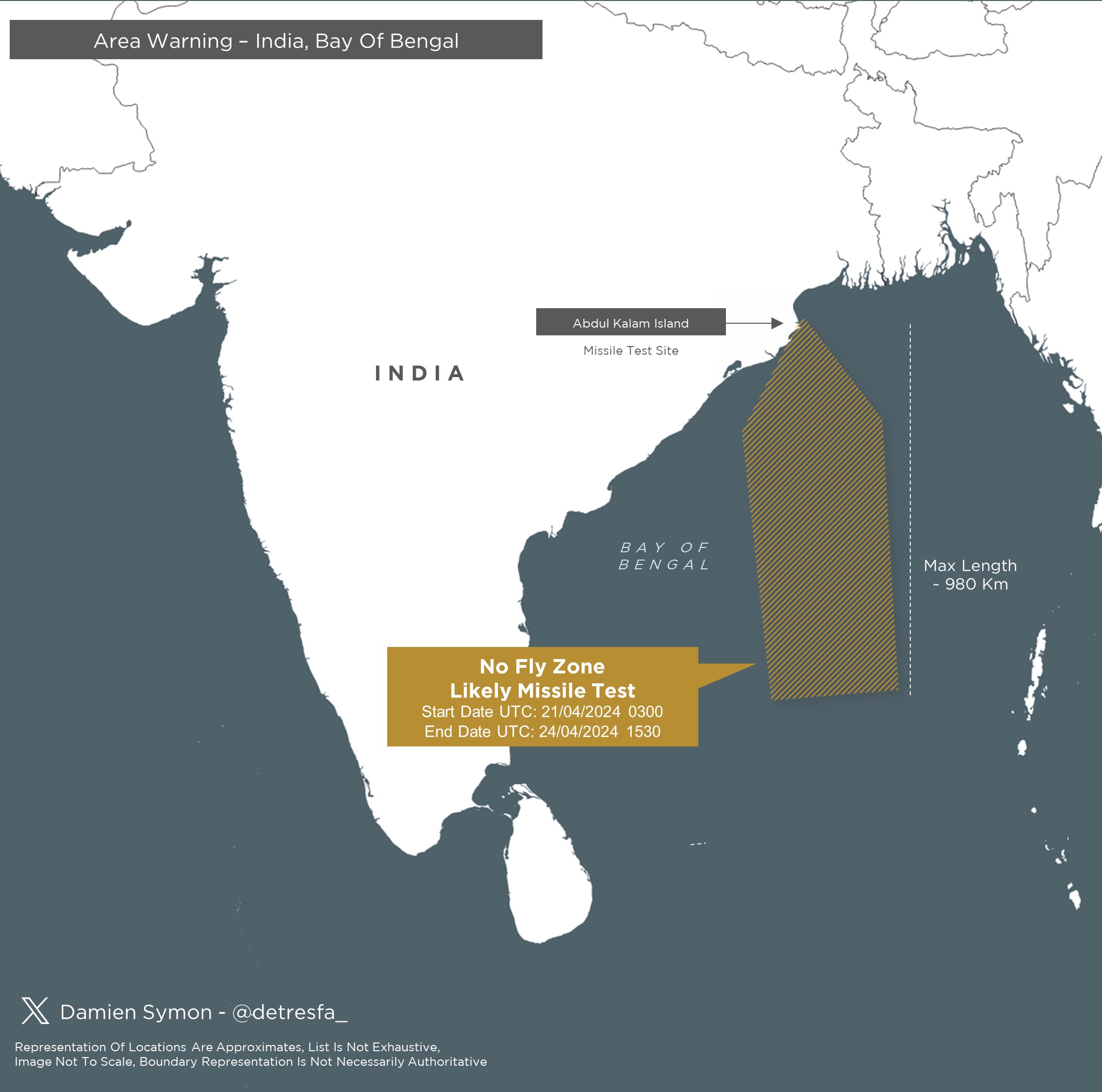
India has issued a Notice to Airmen (NOTAM) establishing a no-fly zone over the Bay of Bengal region from April 21 to 24, 2024. This move typically precedes a missile test, and experts believe it’s likely connected to the testing of an Indian missile system.
The designated airspace encompasses a 980-kilometer trajectory, hinting at a test for a long-range missile. This characteristic aligns with the profile of the Indigenous Technology Cruise Missile (ITCM) project by India’s Defense Research and Development Organization (DRDO). The ITCM is a sub-sonic cruise missile designed for long-range deterrence.
Continue readingSOURCE: AFI
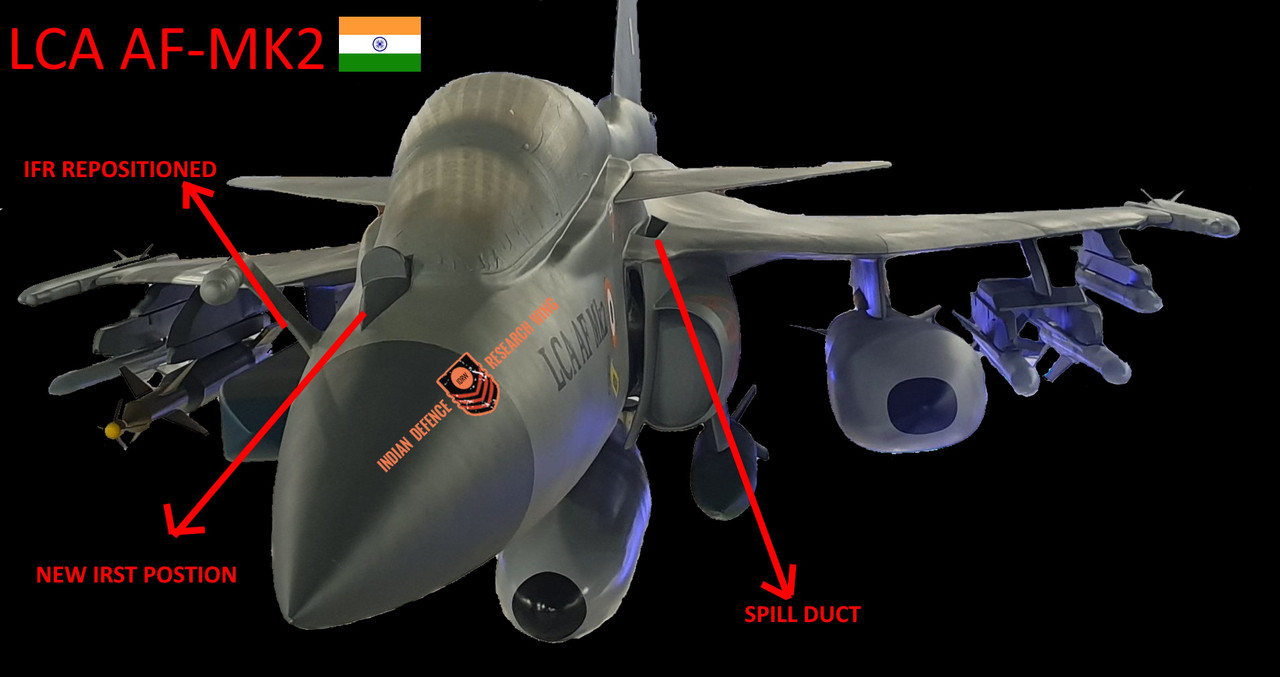
Hindustan Aeronautics Limited (HAL), India’s premier aeronautical agency, is aiming for greater self-reliance in the Tejas MkII program. Their latest initiative involves collaborating with Indian private sector companies to develop a crucial component – a retractable inflight refueling probe.
The current Tejas Mk1A variant relies on a fixed inflight refueling probe supplied by Cobham Limited, a British aerospace company. HAL aims to reduce its dependence on foreign original equipment manufacturers (OEMs) for crucial Tejas MkII components. A domestically developed refueling probe is a significant step in this direction.
Continue readingSOURCE: AFI

India’s ambitious Fleet Support Ships (FSS) program for the Indian Navy has hit a potential snag with the reported exclusion of Turkish participation. Anadolu Shipyard of TAIS, initially expected to collaborate on design and provide key equipment, has seemingly been sidelined.
idrw.org, reached out to Anadolu Shipyard for clarification on their absence from the FSS project. However, the company reportedly declined to comment. Indian media outlets allege the Indian Ministry of Defense (MoD) harbored concerns about collaborating with a Turkish firm due to Turkey’s political stances. This includes Turkey’s support for Pakistan on the Kashmir issue at the UN and ongoing friction between the two nations.
Continue readingSOURCE: AFI

The Indian Space Research Organisation (ISRO) is all set to launch a unique European mission, Proba-3, designed to create “artificial eclipses” in space. This ambitious project will shed light on the Sun’s mysterious corona, a region typically obscured during natural eclipses.
Proba-3 utilizes two small satellites that will launch together and then gracefully separate to fly in precise formation. Once separated, these satellites will act as a single, virtual telescope with a staggering 144-meter baseline – the distance separating them. This configuration forms a giant solar coronagraph, an instrument specifically designed to study the Sun’s faint outer atmosphere.
Continue readingSOURCE: AFI
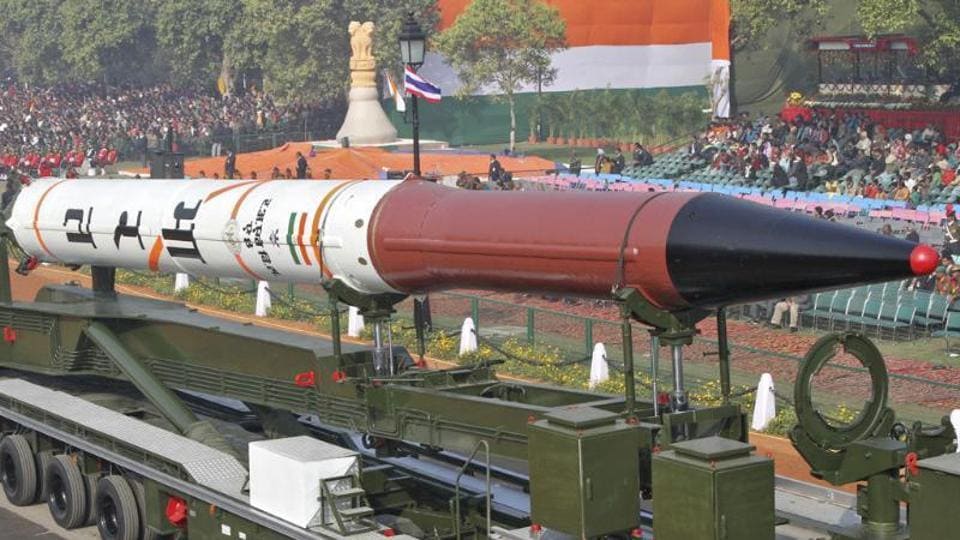
In a fiery speech delivered on Friday, Prime Minister Narendra Modi launched a blistering critique against the INDI bloc, alleging that one of its constituent parties Communist Party of India (Marxist) has pledged to dismantle India’s nuclear weapons arsenal. Speaking at a rally in Rajasthan’s Barmer, PM Modi raised serious concerns over what he described as a “highly concerning declaration against the nation.”
PM Modi’s remarks come amidst escalating tensions and political maneuvering ahead of the 2024 Lok Sabha Election, setting the stage for a contentious electoral battle. The specter of national security, particularly India’s nuclear capabilities, has emerged as a focal point in the political discourse, with the Prime Minister taking a strong stance against any perceived threat to the country’s defense posture.
Continue readingSOURCE: RAUNAK KUNDE / NEWS BEAT / IDRW.ORG

Air Marshal Ashutosh Dixit, Deputy Chief of the Indian Air Force (IAF), has asserted that the winning bidder in the Multi-Role Fighter Aircraft (MRFA) tender for 114 jets must prioritize the integration of Indian-made weaponry.
The IAF has reportedly held discussions with various Original Equipment Manufacturers (OEMs) participating in the MRFA tender, emphasizing the need for seamless integration of Indian weapons onto the offered fighter jets. This ensures that the IAF can leverage its domestic defence industry for armament, reducing dependence on foreign suppliers.
Continue readingSOURCE: RAUNAK KUNDE / NEWS BEAT / IDRW.ORG
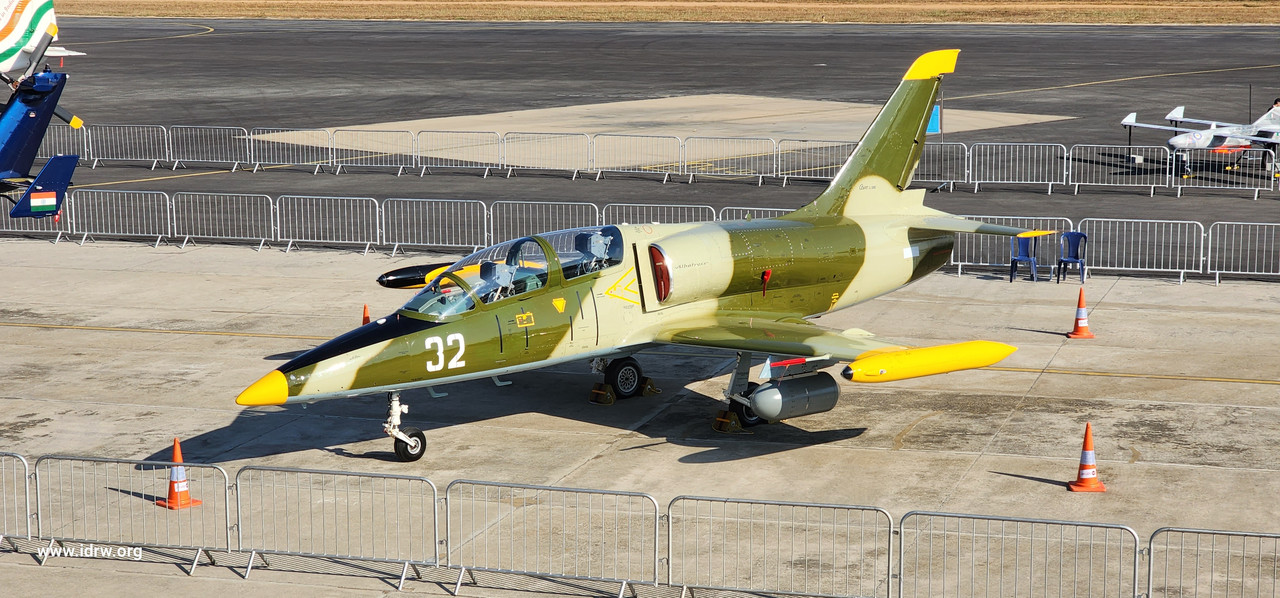
The Indian Navy’s Aero L-39 Albatros trainer aircraft serves multiple purposes for India’s defence establishment. Owned by a private company, this aircraft operates under an Indian Navy serial number, simplifying operations and bypassing the need for civil certifications.
The L-39, first displayed publicly at Aero India 2023 as a static exhibit, boasts the registration IN091. This aircraft previously held the US civil registration NX39MX before being deregistered in December 2020 and exported to India.
Continue readingSOURCE: RAUNAK KUNDE / NEWS BEAT / IDRW.ORG
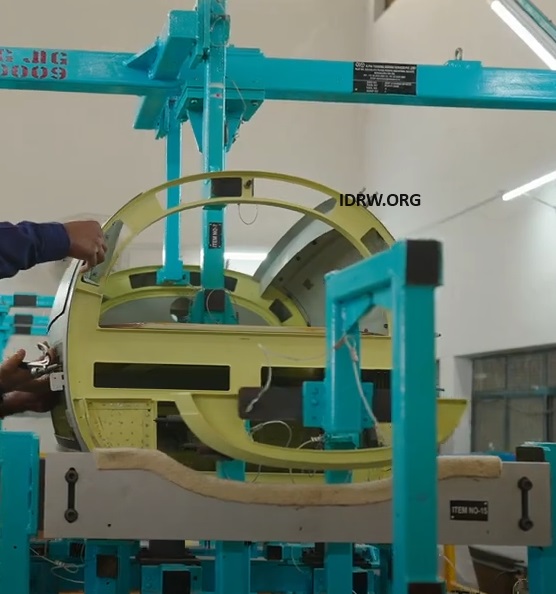
India’s Hindustan Aeronautics Limited (HAL) has finally initiated the assembly of the much-anticipated RUAV-200 drone, marking a significant step forward after a two-year delay. The RUAV-200, short for Rotary Unmanned Aerial Vehicle, boasts a coaxial, rotary-wing design powered by a fuel engine. This “flying mule” is specifically tailored for high-altitude logistical operations, designated as LD (HA).
This project reflects a collaborative effort within India’s defence sector. HAL has partnered with the Defence Research and Development Organisation (DRDO) and the Indian Institute of Technology Kanpur (IIT Kanpur) to bring the RUAV-200 to fruition.
Continue readingSOURCE: AFI

Armenia’s military is undergoing a modernization effort, specifically in its artillery sector. This follows potential losses of hundreds of guns during the 2020 Nagorno-Karabakh War. Two indigenously-developed Indian howitzers, the Advanced Towed Artillery Gun System (ATAGS) and the Multi-terrain Artillery Gun (MArG) 155mm / 39 cal – BR, are poised to partially replace Armenia’s aging Soviet-era arsenal.
The Armenian military has traditionally relied on Soviet and Russian-made towed D-20 and D-30 howitzers, alongside self-propelled Akatsiya and Gvozdika variants. Estimates suggest Armenia may have lost a significant portion of these guns, potentially as many as 279, during the 2020 conflict. The ATAGS, designed to replace the Swedish FH77B howitzers previously in Indian service, offers a modern towed solution.
Continue readingSOURCE: AFI

A debate program aired on Armenian Public TV in late April 2023 sparked discussions regarding potential obstacles hindering the delivery of Indian weaponry to Armenia. Former parliamentarian Gayane Abrahamyan alleged that Russia might be pressuring Iran to block the shipment. This claim, echoed by other sources, raises concerns about the regional dynamics impacting Armenian military modernization efforts.
While Abrahamyan’s claim has been echoed by other sources, it remains unsubstantiated. When questioned in February 2024, Iran’s ambassador to Armenia, Mehdi Sobhani, avoided direct comment. He emphasized Iran’s support for a stronger Armenia and the importance of regional power balance for peace. This implies a willingness to potentially assist Armenia’s military development, but avoids addressing the specific issue of the Indian shipment.
Continue readingSOURCE: IDRW.ORG TEAM.

VU-Dynamics Private Limited, a manufacturer of defense equipment, has recently introduced two new loitering munitions, the APJK6C100 and the APJK2C40. These unmanned aerial vehicles (UAVs) are designed for long-range reconnaissance and attack missions.
The APJK6C100 boasts an impressive range of 100 kilometers and an endurance of 50 minutes. This extended reach allows it to strike targets far behind enemy lines. It can carry a 6-kilogram warhead, delivering significant firepower for its size. The APJK6C100 has a maximum altitude of 4 kilometers Above Sea Level Measured (ASML), offering a vantage point for surveillance and attack operations.
Continue reading